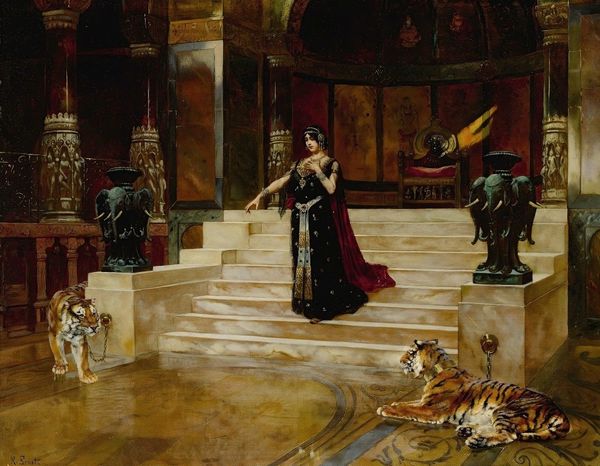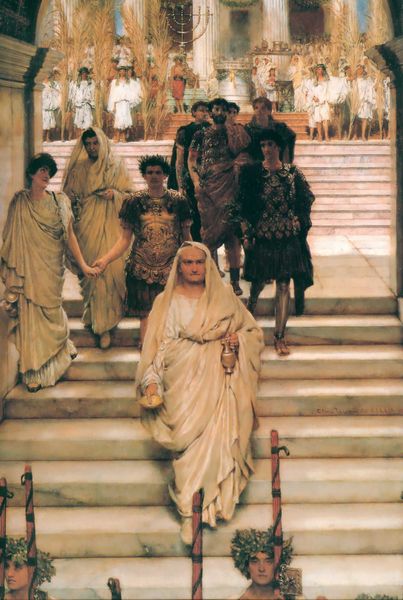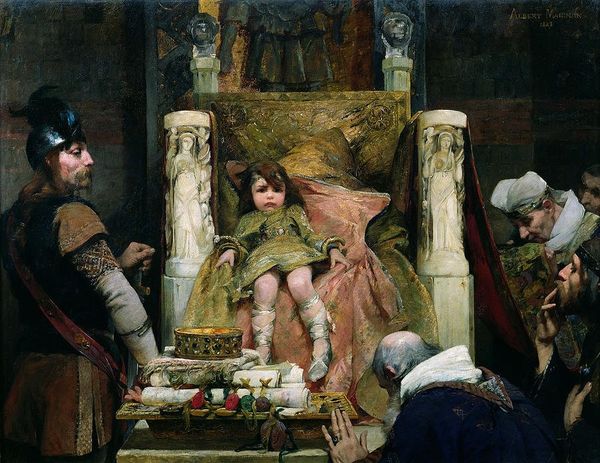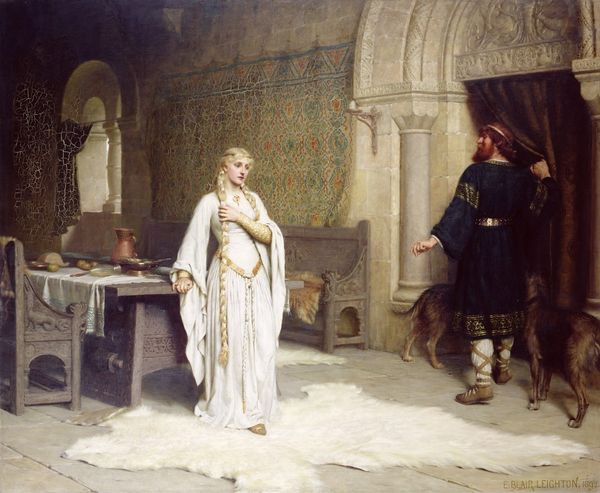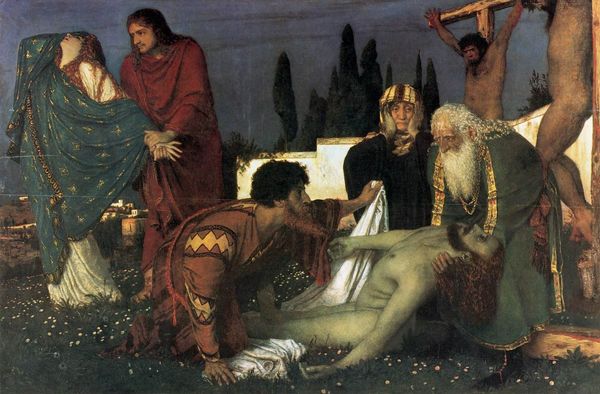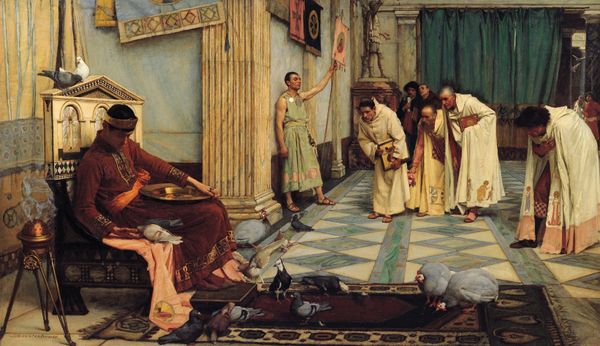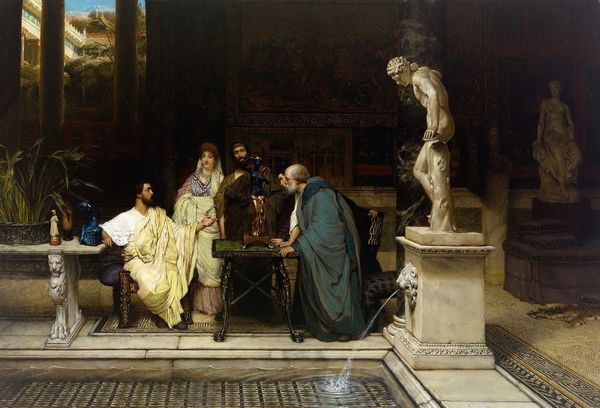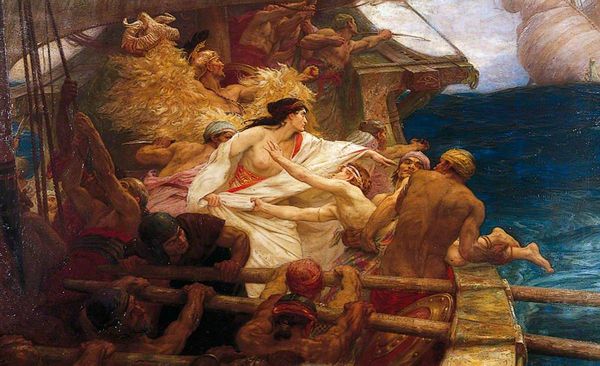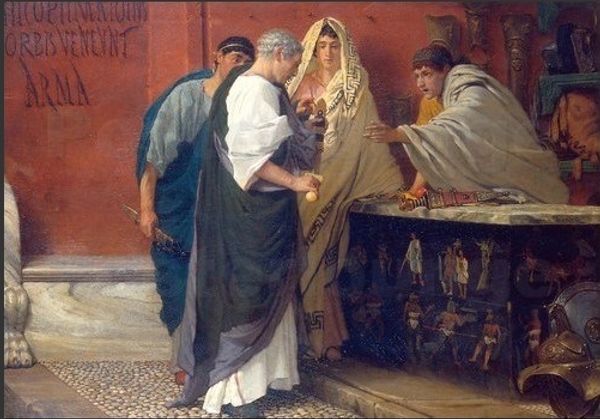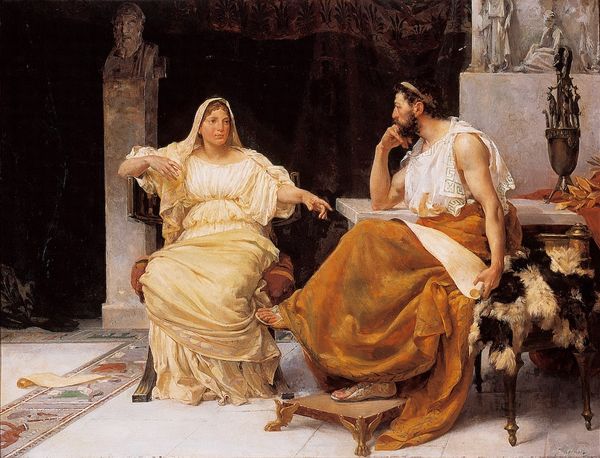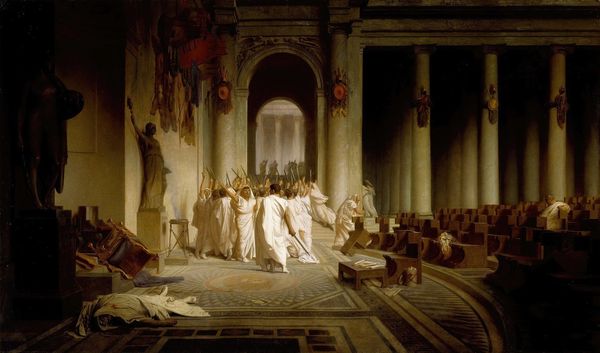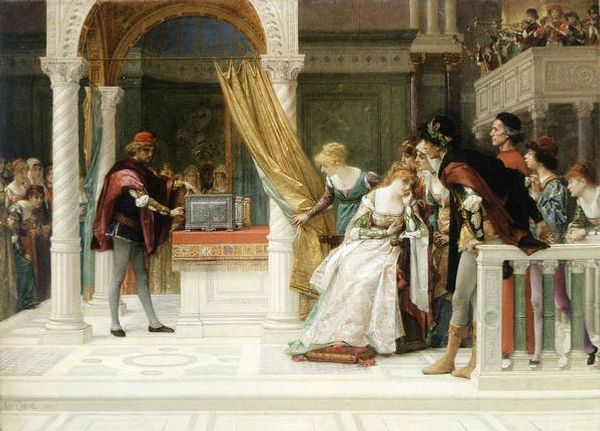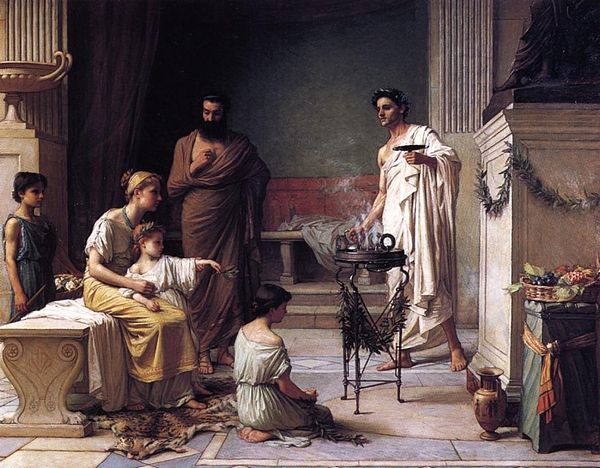
Dimensions: 183.5 x 267 cm
Copyright: Public domain
Editor: Here we have John William Waterhouse's *Marianne Leaving the Judgement Seat of Herod*, an oil on canvas painted in 1887. The central figure, Marianne, is descending a set of stairs, looking back at what seems to be Herod's court. The scene feels quite tense, steeped in injustice. What do you see in this painting? Curator: What strikes me is how Waterhouse positions Marianne within a nexus of power and patriarchal judgment. The narrative, drawn from historical accounts, becomes a stage to explore themes of female defiance against oppressive systems. How does her gaze challenge the authority embodied by Herod and his court? Is she a victim or a symbol of resistance? Editor: It’s interesting that you call her a symbol of resistance. Her hands are bound. She seems trapped in the narrative. Curator: Indeed, the chains can be viewed as both literal restraints and metaphorical constraints imposed by a society that seeks to control female agency and autonomy. But consider also her regal bearing, her averted gaze seems to defy Herod. Waterhouse uses her image to speak about broader struggles for women’s emancipation and social justice. Don't you find this contrast significant? Editor: Yes, the contrast between her physical constraint and her dignified posture makes me reconsider my first impression. She's not just a victim. Curator: Exactly. The Pre-Raphaelites often used historical narratives to critique their contemporary society, particularly concerning gender roles and Victorian morality. How does this painting fit within that context? Editor: Now that you mention the historical and social critiques of the Pre-Raphaelites, this piece makes much more sense to me. Curator: Right? It's about bringing art history and contemporary struggles together in a richer and more layered cultural dialogue. Editor: I learned that what appears to be historical can also convey feminist discourse when the artist calls on us to be present. Thank you!
Comments
No comments
Be the first to comment and join the conversation on the ultimate creative platform.
